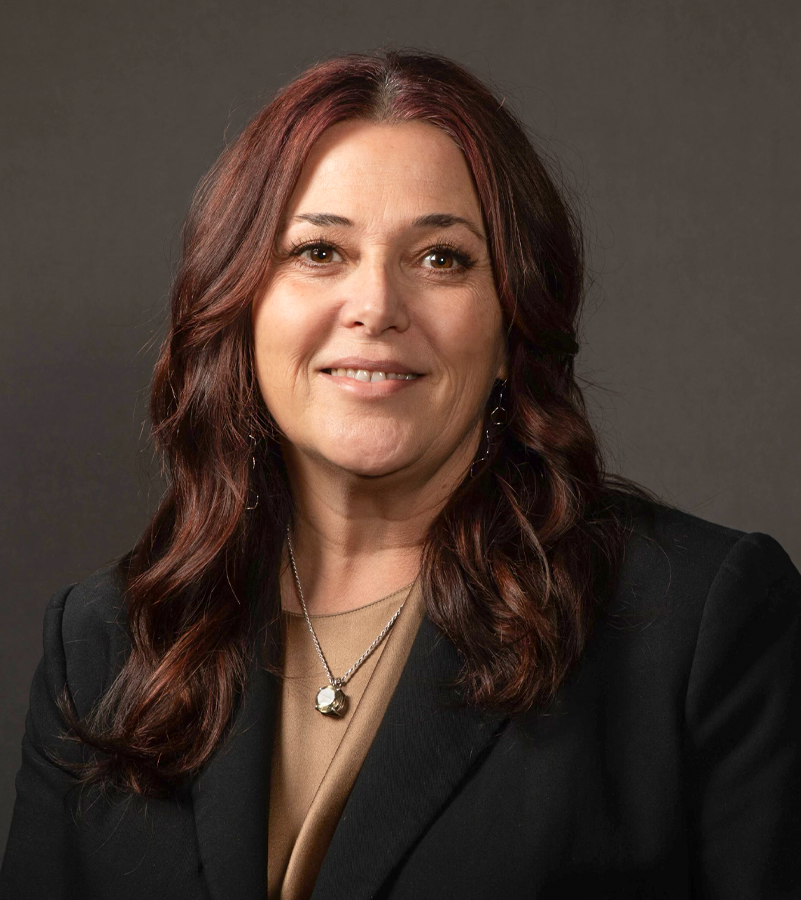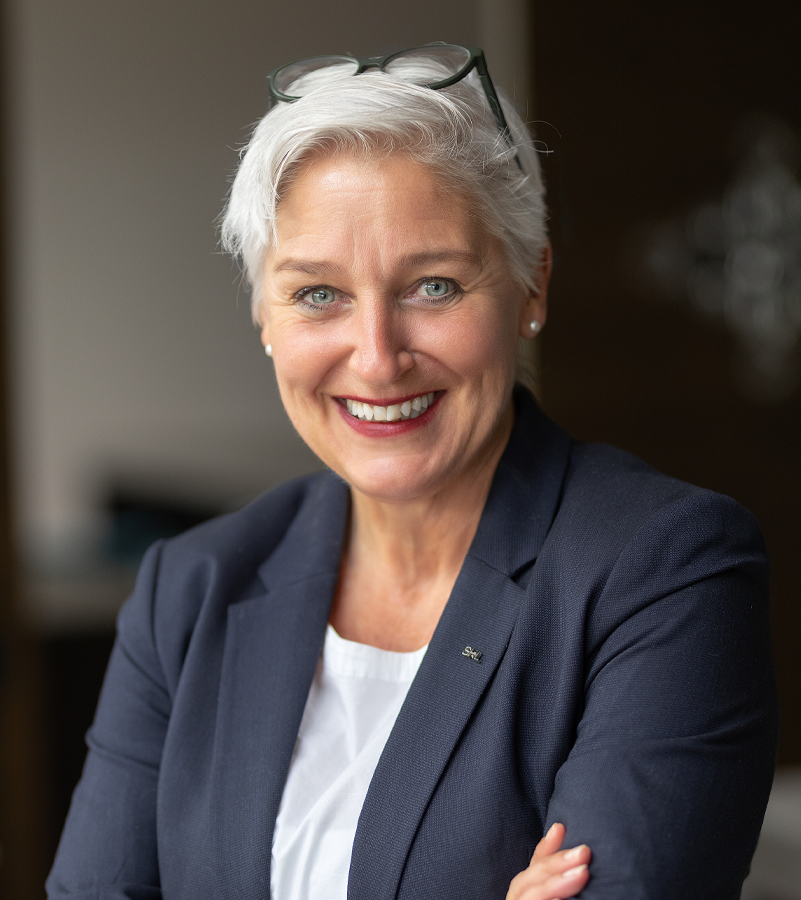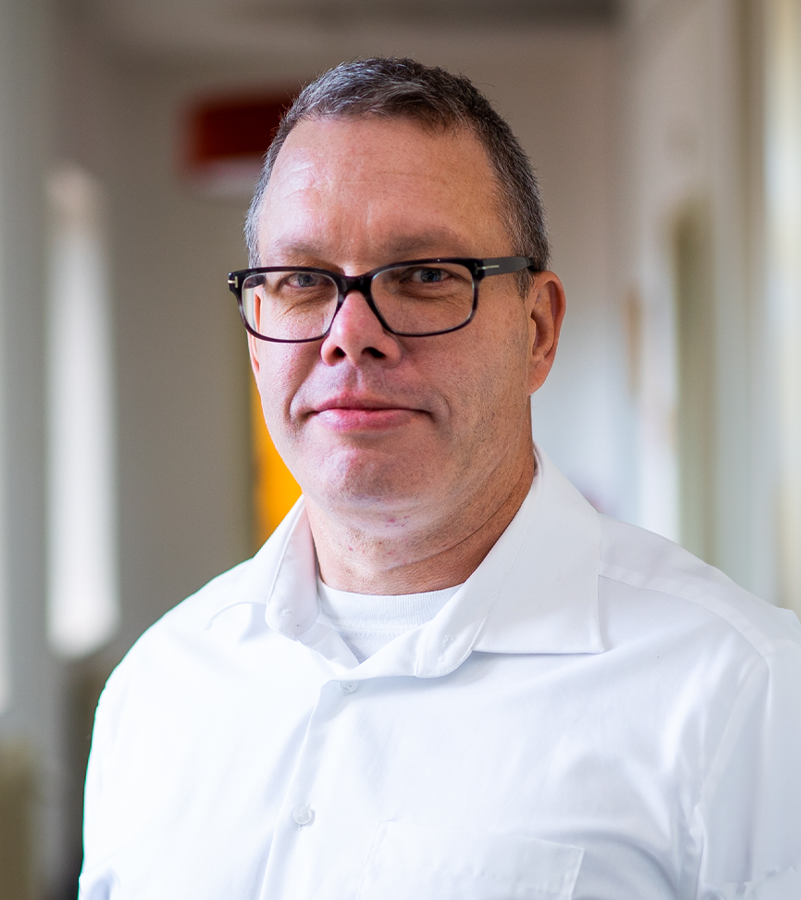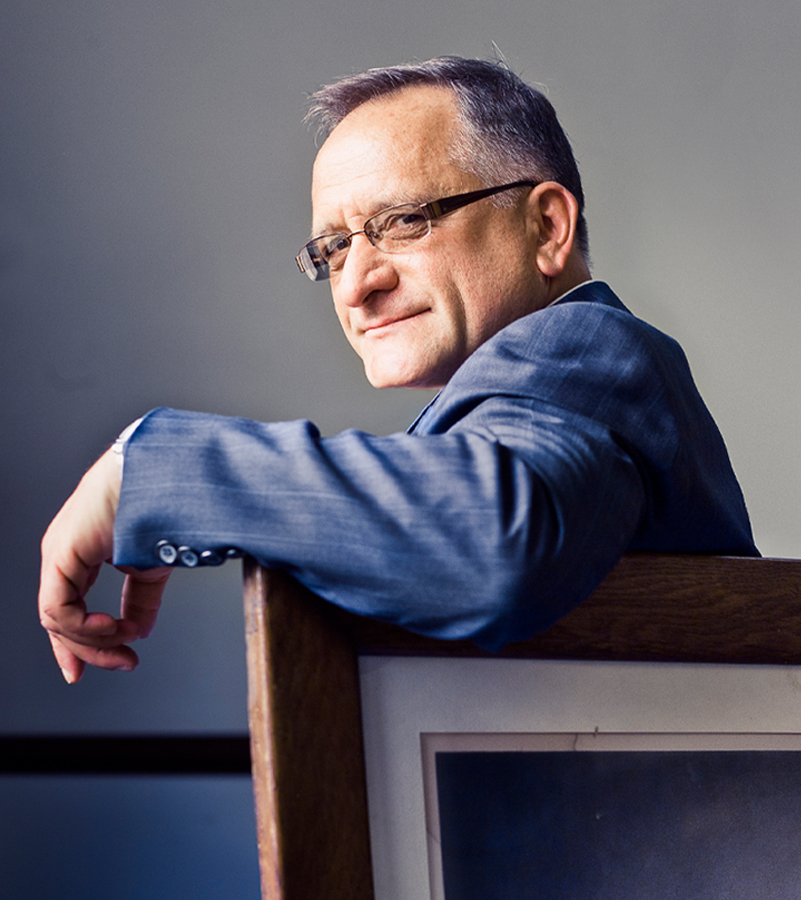"We would like to form hospitality personalities who fit in the tourism industry.”
Will you perhaps start by giving us a brief overview of Phoenix Union High School District as of today?
We are unique in that we are solely a high school district. So, our students are in Grades 9 through 12 only. That means we’re a very progressive district, and I’m very proud of that. I don’t think I could work anywhere else.
It is greater Phoenix, so it’s this canopy of urban Phoenix. It’s 220 square miles of Phoenix. There are 24 schools and just over 26,000 students. About 3,500 employees serve Phoenix Union. We’re in the capital city, and we have 11 comprehensive high schools, which are the full, larger high schools. We also have six small specialty schools. We have three micro-schools, which are schools within a school. We have three support schools for students who need extra wraparound services, and we have a digital academy. But no matter what, our schools all welcome and inspire students to go places and do things that matter. That’s our brand promise.
And what would you say are the keys to the success of Phoenix Union?
I think it has to start with inclusive environments where students feel welcome. That has to come first, and we should focus on equity and inclusivity. From the minute they walk onto our campuses, they should be greeted, they should feel welcome and they should as part of a community and a culture. We’ve worked really hard with our principals to ensure that culture, climate and sense of belonging are present.
Secondly, I think one of our keys to success is a guaranteed viable curriculum. We don’t want a student on the West Side to have the same algebra class as a student on the East Side and have different experiences. Of course, they will have slightly different experiences because of their teachers. But the curriculum is guaranteed, and we have essential standards that we really hone in on that we guarantee.
It’s not that we don’t teach all the standards. But we know which ones are most important for transferable to the next course and transferable to other subjects. We’ve really honed in on those guaranteed skills that they need and how we make that equitable across all of our campuses so that everyone is getting the same thing.
To do that, our teachers work in teams. There’s a geometry team or an algebra team, and they’re called collaborative teams. They work together. They share each other’s data lessons, stay in pace with one another and really help each other. So, when a school hires a geometry teacher, they don’t just hire a teacher, they hire a team member who’s part of a bigger picture.
In the past, teaching has been a very isolating career. You go to your classroom, and you’re with kids all day. But in Phoenix Union, we want you to understand that you must work with adults. So we collaborate together on teams every single week. We protect and allocate time for them to collaborate with their teams so that they can give their kids equitable experiences and have the support of each other.
We celebrate diversity unlike anywhere else I’ve gone to. When I visit, we make sure that our hallways, our schools and our climate are filled with students and experiences that look and sound like them. We have culturally responsive pedagogy and instruction so that they don’t just hear the colonialism—that one curriculum is taught to everyone in a certain way. We try to tell it from different perspectives in a culturally responsive way.
So, they may have English, but they may have English with an African American perspective or English with a Native American perspective. For many of them, this is the first time they’ve heard different perspectives and cultures. A lot of them wouldn’t have normally gotten that until college. But I have to tell you that the engagement levels, grades, participation and interest in these classes have just taken off. Kids are active because they see the relevance and the meaning of their own lives.
I think another one of our key successes starts around the freshmen. Our freshmen are like a regular school district’s kindergarten because they’re the first ones we see. It’s important that we understand where they came from at a K-8 school and where they are going to go into high school. It’s a tough transition, even in a small town, when you go from middle school to high school. It’s even tougher in a city when you’re switching school districts.
I was a freshman teacher at one time, and you know a lot of them will come late or won’t come on the first day. When we asked them why they did not come, they said they were afraid or intimidated. They didn’t know if they were going to know anyone, where to go or what to do. Did they make it to an orientation? So, we really took hold of this around 2017 or 2018 and dug in and studied our freshmen.
We talked to them and walked in their shoes for a day to see what that experience was like. It was awful, by the way, and we really asked them in panels. We asked their parents. We looked at their data. What we found was that they weren’t connecting right away to high school.
So, we set out to change that experience. We started by building freshmen houses. So, instead of 700 freshmen going in 700 different directions on campus, there are 150 housed with the same three teachers for English, math and science. There are another 150 who are with the same three teachers and kids all day for English, math and science courses. They have their electives everywhere, but they stay in a house.
Some schools have gotten creative. They name them by colors. Some name them animals. It just depends. You have the dens and houses, and they start to get to know each other a little bit, and then they start to branch out into the campus. But these three teachers really hone in on them and make sure they stay on track.
We also recruit upperclassmen to join Link Crew to help them mentor them and build near-peer relationships with them. We sat out and did a freshman-only first day. So, just freshmen come for the first few hours of the first day. They’re welcomed by all these upperclassmen cheering forum in the gym, showing them all the clubs and sports that they can join, showing them small-group campus tours, looking at their schedule with them and saying, “Oh, I had that teacher. Come with me.”
There are more students than there are adults, so we use our Link Crew. They get out there and really help the freshmen throughout the year. We do mixers with them. We teach. Our freshmen teachers are supported by a house coordinator who helps get them with what they need.
They got all new furniture in their classrooms, and we really just embraced our freshmen. We monitor their data so closely, and I’m just so pleased. This year, our dropout rate just came in, and our dropout rate was once as high as 6 percent after Covid. But when we look at the freshmen this year, it’s 1.5.
I’m still mad about that 1.5, but we’re making inroads. They’re staying with us. And I tell everyone from an enrollment standpoint, if we can get them hooked in their freshman year, they’re likely to stay all four years with us. And how do you get them hooked? It might be through football, like for my son. Throw him a football, and he will throw it back and catch it. For others, it’s art club. We have BSUs, or Black Student Unions, which, again, is a college thing. But we have them on all our campuses. So if they need a place, whether it’s the gay, straight alliance, Black Student Union, art, volleyball or cheering squad, you name it.
Connectedness is a huge part of our freshman experience, combined with the teachers and all that. We’ve just seen such success with it that we’ve gone back and talked to them. And they say, “Why can’t you do that with our sophomore year, too?”
We just barely launched our freshman year, but I think that’s one of the biggest difference-makers. They suddenly feel like they belong. And then attendance—they keep coming back. They know that there’s an adult on their campus to whom they’re connected. They have this peer group to which they get connected.
Sense of belonging is definitely very important, and unfortunately, the 1.5 percent could be really hard to fix. It might be external factors. But then I wanted to ask about key programs and offerings that you would like to highlight.
One of the things we pride ourselves on is being a portfolio district. We know that in Arizona and across the country, school choice is real. Parents have a choice to send their students anywhere they want. Back when I went to school, there were boundaries, and you had to live within the boundaries of your school to attend that school. It’s no longer the case. If you can get there, you can probably go there.
We know our parents have choices. We know that there are charter schools out there. There are vouchers. There’s a lot. So, in order to find something for every student, it’s not a one-size-fits-all. I think that’s where high schools go wrong. Our kids are so individual and so talented. It’s up to us to offer a diverse portfolio of opportunities. So again, it’s pretty equal across the board for the freshman house. We’ve got that at all our campuses. That’s important.
Equally important is that in the Carl Hayden Community, we are launching a dual language program. I’m super excited about that because I believe that bilingualism or multilingualism is a superpower, a global power. Arizona isn’t always the friendliest state when it comes to other languages. We have an English-only law in the classroom and different politics associated with that. But we recently won the lawsuit with dual enrollment or dual language.
And so, we’re charging forward with that. It’s good for kids. It’s good for their experience. They now become proficient and strong in at least two languages, and we know that they’ll pick up a third one if they want because once you’ve got one, it’s much easier to acquire additional languages. So that’s one of the culturally responsive coursework that I spoke of earlier with the Native American, African, American and Latina perspectives. I think it is another big one that pulls kids in.
We also have multiple CTE programs, which are career and technical education. Each one is divided into an academy at our academy schools. You might be in the Public Service Academy or the Engineering Academy, and within these academies are a couple of different pathways that you can take for certification. It might be in engineering, flight or aeronautics, precision manufacturing, health care or nursing.
And so again, it’s about getting kids ready for college, career and life. We want to make sure they’re all ready for college. However, some of them may not want to go right out of high school. And that’s okay, too. We want to make sure they have a livable wage while they’re deciding to go back to college or have a livable wage that they can grow in a career. So that’s a program that I think gives them skills in the high-demand areas in Phoenix and across the country. It’s hands-on, so they love it. They just love going in and doing construction, automotive or culinary. I could go on and on. We use culinary techniques to feed ourselves, and what they can do is amazing. I could go on and do a whole session just on CTE.
We have a robust dual enrollment program linked with CTE and academic courses. We believe it gives kids a head start on college. Some kids can graduate with as many as 12 college credits, and they are that much further toward their AA or bachelor’s degree. So we’re constantly trying to get teachers who are accredited in the dual enrollment course so that we can offer it to as many students as possible.
We have our small schools that specialize in like coding academy that’s pretty amazing. Kids will do networking and coding with different pathways within the computer technology industry and AI. Just really looking forward to being there. We also have a police and fire academy, which is super cool. Those who wear the red shirts want to be firemen, and those in blue shirts are the policemen. They stand at attention every morning, they do drills and they have an obstacle course. They still do their graduation requirements. But they’re all in there to be something in that firefighter or police domain and it doesn’t mean they’ll necessarily be a police officer.
So when I talk with graduates, oftentimes they might be a 911 operator making $45,000 a year while they’re going back for a nursing degree. Again, a more livable wage for them. They may be an EMT. Quite a few of them get their EMT license on their way to being a fireman. Some of them choose to work in our correctional institutions. So they’re not yet a police officer, but they’re working in a guard-like setting or law enforcement-type setting.
And so there. There are all these opportunities, whether it’s health care, nursing, 911, logistics, in the fire department, they’re training forensics, you name it. They have exposure to all of it. Those are really one of the cooler programs that I just absolutely love. We also have a college and career-ready program that gets kids truly ready for a four-year university. That’s our Wilson College Prep.
One of our coolest programs is called PXU City. It’s where kids can take classes at any of our schools throughout the day. They come in, design their own schedule, and the city is their classroom. So they can have a class at Central across the street from me right now, maybe go over to code, and then spend their afternoon in an internship. Then, they do their English online at home.
That’s just one example. There are kids who are part virtual and part on campus. I’m not a morning person. I want to do the afternoon. They, the principals and the counselors work among themselves. They don’t see them, but they try to come. We bring them in together quarterly to work with them. We’re seeing great success with that freedom and that ownership of that hybrid-type schedule of what they might see in college.
I remember how it was for me in Spain, which is very traditional. You are 18, and you have to go to university. Then, I went to Sweden for an exchange year. My best friend had been working building cars in a factory for five years. He was five years older than me. Then he started his bachelor’s, and he ended up being a PhD student. Now, he’s a professor in Portugal. So, my point is definitely that there are many pathways now. I see how institutions like yours have adapted to these new paradigms. How are you getting little adults ready for life?
We have a lot of partnerships. We have this one really cool thing we do with ASU (Arizona State University), which has been our biggest partner for four years. They wanted to get a list of our seniors who had applied, and I finally just said to the guy, “I don’t understand why you do this. There are so many kids who would go to ASU, but you make them apply, and then they pay the fee and then they wait. So then they just don’t do it because they’re the first in their family. I was the first in my family. Consequently, you’re missing out on kids.” And they said, “Well, what do you want me to do?” I said, “Just accept them and tell them that they have to meet these requirements, but send them a letter saying you’re in.”
I wanted them to do it in their freshman year. They said they wouldn’t do it in freshman year, but they said they would do it at the beginning of the senior year before they applied. So I sent them a big data file, and they checked it against what we call ABOR, which is the university requirements. They identified a list of kids who had met those requirements. And then there was a middle list of kids who were like just one deficiency, maybe in science, and you can get admitted with a deficiency. So, they had this deficiency list. Then, they had a list of things that a student needs in a foreign language you need. If you’re that, you really need to go to a community college, but then we’ll accept you.
We send out these letters every August. It’s like Christmas. I love it. These kids get letters signed by Phoenix Union and ASU. They say congratulations. You’ve been accepted to Asu. That’s the first college acceptance. And these kids don’t know if it’s junk mail. They’re like, “It looks real.” So they bring it to their counselor, and they’re like, “Miss, look what I got. I got accepted to ASU, and it is real.”
And so it’s just been a game changer for a lot of kids. Maybe not all of them will go. Maybe some of them will go to work like your friend, but they know in the back of their mind that ASU accepted them, and so when they’re ready to go back, they have that confidence as you wanted me when I was 18. So maybe they’ll still want me when I’m 22 because that was a really cool program.
So we have partnerships with all the universities to really get that college-going mindset and at the community colleges what programs they have for certifications as well for the kids that just want to quickly get a technician degree or welding or something like that. So I meet with our colleges all the time because I think that’s the next ramp for most of our students.
We have covered a lot. Is there anything I haven’t asked you about that you would like to mention?
I would just say our students are amazing. But Phoenix’s urban core has shifted and changed. We are a refugee destination for many families. We get students from all over the world. People would stereotype it like English and Spanish, and I say, “Hold on. We have almost 91 languages here.” Yes, Spanish is still primarily the language spoken most commonly at home, but we have such diversity from all over the world.
Students amaze us on a daily basis. We had our first female pilot take a solo flight, and it was her senior year in the aerospace pathway. They never stop amazing me, and they are our future. They are the future of Phoenix. Truly, I’m so proud of them, and they’re not all from affluent families, but they are smart and resilient.
They’ve got grit. Many of them get up very early in the morning to take a bus across town to get to school. Their safety is our concern on our street, but they just keep coming back, and I love them so much. I just finished a graduation, and I was reminded again of what a tremendous impact our district has on our city, county and state.
We are privileged to serve this community, and anytime you’re in Phoenix, please come visit us. They’re amazing kids, and you’ll just love them.
I have one more question. What is your vision for the district in the next three to five years?
Future-ready. In my opinion, the future is now, so we cannot think about it; the future is here. So, how are we using artificial intelligence in the classrooms? And how are we getting kids ready today? How are we using time and space differently than we did 20 years ago, 10 years ago, and even five years ago? If we don’t maneuver and shift, our kids will be left behind.
So, I would like every student to graduate college-ready with a skill, with dual enrollment credits and a bag of skills. Whether that’s college credits, certification for a high-paying job, or college acceptance, they leave with an asset and can give back to our community. So we’ve just got to continue to build strong, robust programs that are asset-based for our kids.



















